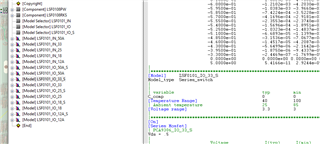Other Parts Discussed in Thread: LSF0101
Hi Team,
I have a few questions about the IBIS model of this part.
A customer was trying to simulate some signals that use the LSF0108RKSR to go between 1.8V and 3.3V and wanted to know if the model allows simulation through the actual part so they can see the level translation from input to output with whatever series impedance the part inserts?
The datasheet has many cases and examples of different resistor combinations, can you point me to a section more specific for 1.8V to 3.3V? They have two signals that go from 1.8V to 3.3V and a third from 3.3V to 1.8V.
Also, the resistors in the datasheet are for level translation and not really for signal integrity, when the switch is closed, they may need a terminator at the far end that is not necessarily the pullup R. can you suggest how to simulate this? will the IBIS model help?
Let me know if you need more information.
Regards,
Marvin



